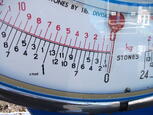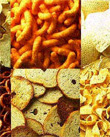
A question we get a lot is:
“How do I determine the moisture in my product?"
Of course, the answer is often “it depends”, and the method does depend on the chemical and physical composition of the product. There are several methods used to determine moisture content: Loss-on-Drying (also known as Weight Loss), Karl Fischer, NIR, and Radio Frequency.
Loss-on-Drying (Weight Loss)
Loss on Drying (LOD) is the most commonly used method. This method uses the principle of drying a sample of the product and comparing the weight before and after drying. The difference in weight represents the moisture that is in the product.
Early techniques used a laboratory oven to dry the sample for an extended period of time – up to several hours. Manual weight measurements were taken before and after the drying interval. The moisture content was calculated manually, normally using the formula (Beginning Weight - Ending Weight) / (Beginning Weight) resulting in a moisture percentage.
(Note that some applications use a Dry Weight basis, which is the  difference in before and after weights divided by the ending weight.)
difference in before and after weights divided by the ending weight.)
Automatic techniques have since been developed which shorten the test time and calculate the moisture content with built-in scales and software to record and calculate the data.
Wide Adaptable Product Range
Products that can be tested using automated LOD techniques cross a wide spectrum of materials that encompasses carbon black, products, chemical compounds and building materials. Testing for many of these products is easy to set up and measure.

Products such as potato chips, gelatin, shampoo, and wastewater sludge and charcoal can be successfully tested on automatic LOD moisture balances using factory default settings.
There is a range of products that contain constituents which can distort moisture readings. Examples are meat and dairy products, which include significant amounts of fat. Also in this group of more difficult products are building plaster, printer paper and tobacco. With special temperature set-ups and other adjustments to the test parameters, satisfactory results can be achieved for this type of material.
A third type of product, which, because of its chemical and mechanical structure, often has a very low moisture content, can be tested with automatic LOD. However, the test parameter set up and the small levels of moisture make it difficult to get consistent test readings. Other methods such as Karl Fischer give more satisfactory results.
Guidelines for Determining an Effective Method
In order to help identify products or applications that fit each type describe here, we set up a LOD rating for a number of products. These ratings are, starting with the easiest:
- Satisfactory Results with Factory Defaults,
- Acceptable Consistency of Results Can be Obtained with Temperature and Test Parameter Adjustments and
- Very Difficult to Achieve Satisfactory Repeatability – Other Methods Should Be Considered.
These rating are formatted in a table called “LOD Effectiveness for Common Applications.“ Click on the button below to access the chart.
Let us know if these ratings are useful.
Even simple questions like this tax my instrumentation reason.
Art
P.S. If you are not subscribed to these Test Equipment rants and muses, sign up at the top of the page.


